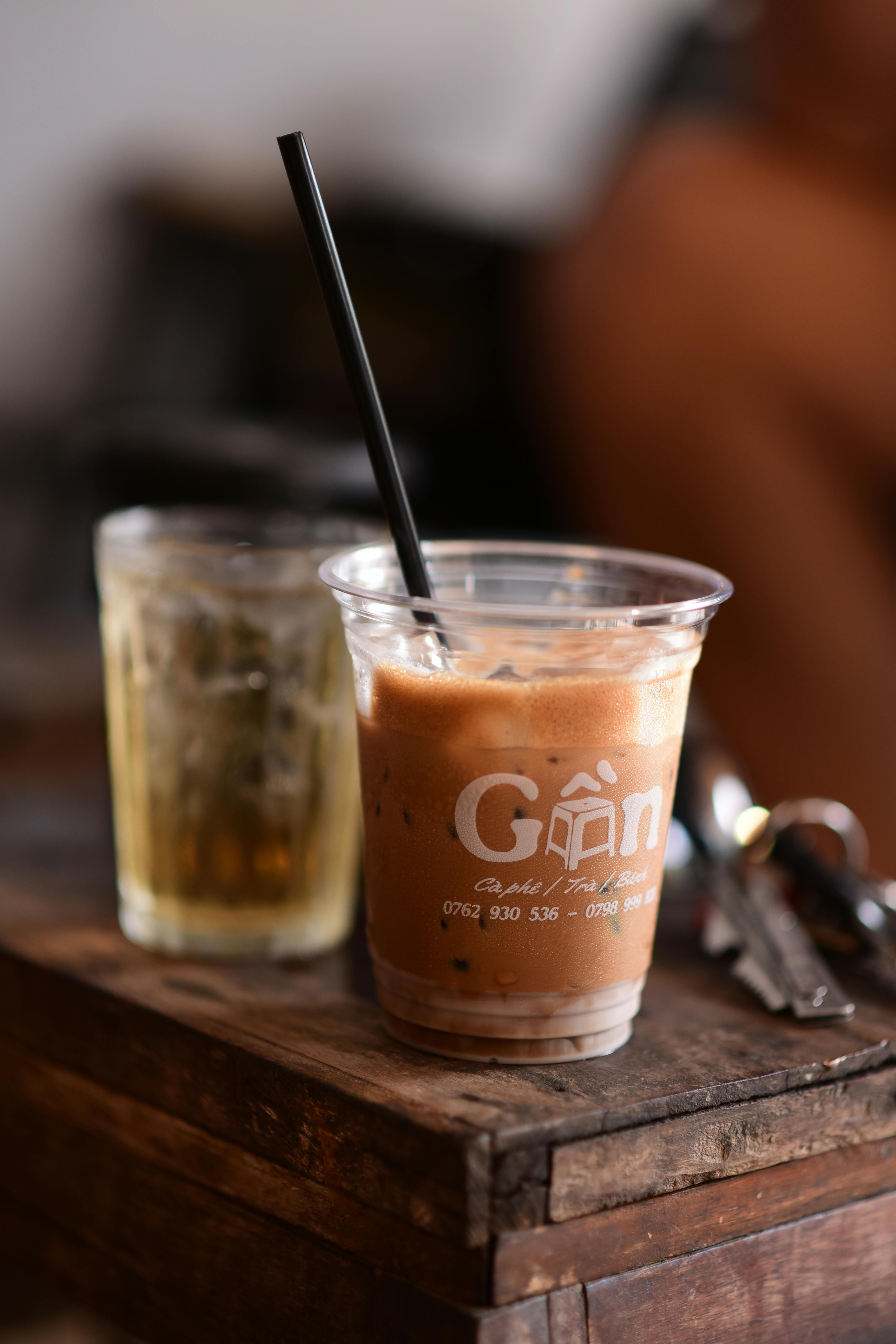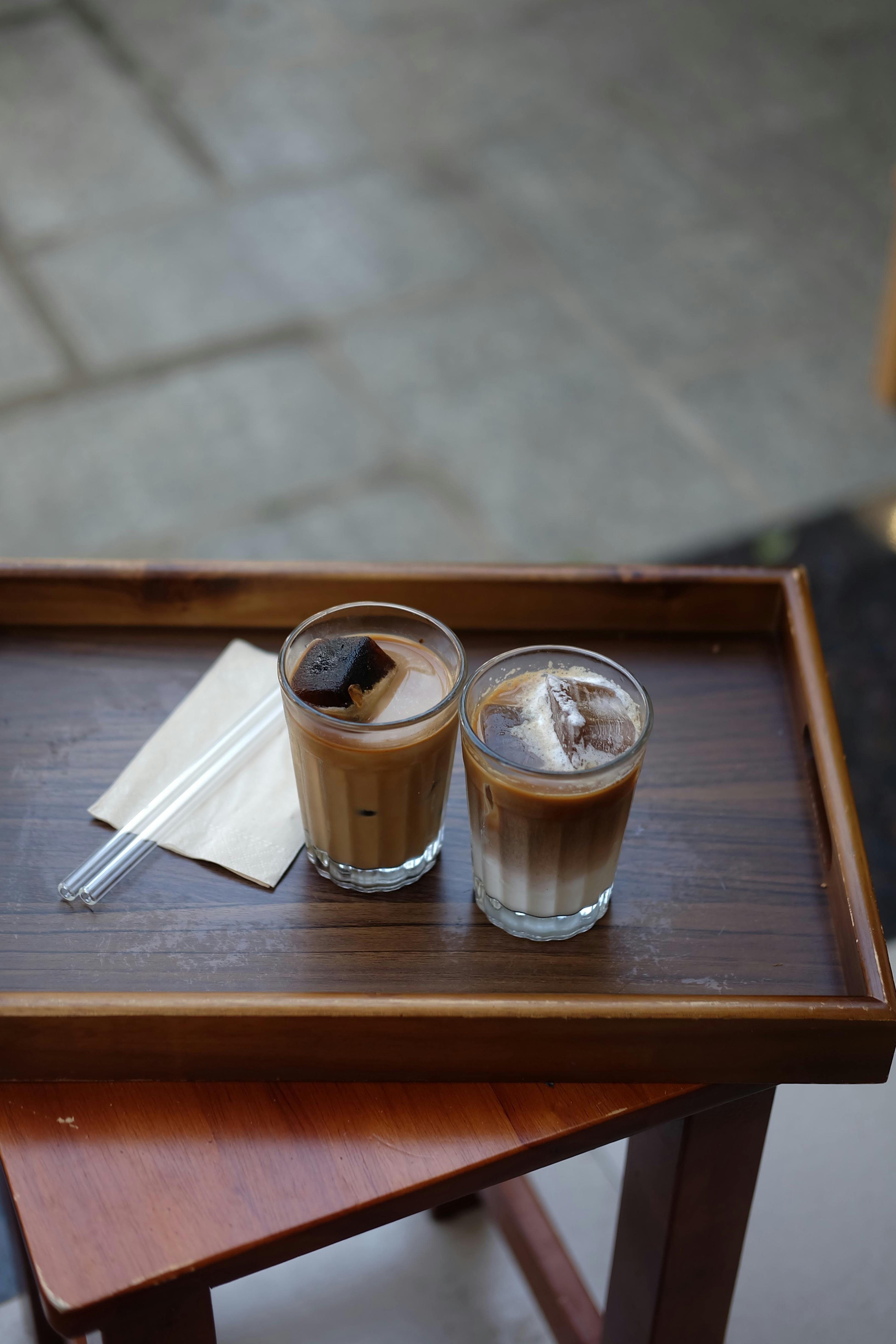How Vietnam’s Coffee Methods Power Cafés and Global Brands
Ever found yourself wondering why Vietnam keeps showing up in global coffee conversations? You’re not alone. Three years back, before I’d ever set foot in a Vietnamese café, I dismissed most Southeast Asian coffee as commodity-grade—cheap, maybe robust, but not worth a second look. Actually, let me clarify that: my perspective was shaped by hearsay and outdated stereotypes. Then, in 2019, I found myself in Hanoi, sipping the real stuff—intensely rich, delicately balanced, and utterly unique. That’s when everything changed for me.
These days, Vietnam’s coffee scene isn’t just about tradition; it’s a full-blown global movement shaping specialty cafés everywhere. What really strikes me is the way Vietnamese producers blend time-honored techniques with innovative practices, collaborating across generations and geographies. The result? Cafés and brands that absolutely stand out—locally and worldwide1. In my experience consulting for up-and-coming café chains, their biggest wins always come from adapting lessons learned in Vietnam.
So, what’s the secret behind Vietnam’s coffee success? It’s not just about growing robusta and hoping for the best. It’s a strategic ecosystem, weaving together agricultural techniques, local flavors, business models, hospitality, and storytelling. Whether you’re a café founder aiming for Instagram fame, a global brand manager searching for differentiation, or a curious specialty coffee fan, Vietnam’s methods offer something—a blueprint, a challenge, or maybe a surprise.
Vietnam’s Coffee Heritage: Context & Myths
Let’s backtrack for a moment. Coffee wasn’t native to Vietnam; it was introduced by French colonialists in the late 19th century, shaping both agricultural practice and social life2. Most folks think of Vietnam as the world’s second-largest coffee exporter—and that’s true, but it misses the nuance. It’s the king of robusta, sure, supplying nearly 40% of the planet’s robusta beans3. Yet, within Vietnam, coffee culture evolved beyond mere production: cafés became hubs of social change, innovation, and entrepreneurship.
Vietnam produces more than 1.6 million metric tons of coffee annually, making coffee its second-largest export after rice—a powerful economic driver that shapes rural communities, infrastructure, and national identity4.
What really excites me is the shift over the last decade: an explosion of specialty focus and a move away from bulk commodity exports. Previously, I believed specialty was a Western import. Not so. Homegrown innovation—from single-origin arabica farms in Da Lat to phin-filter micro-lots in urban Saigon—has given Vietnam an edge among discerning global café owners5.
Key Insight:
The most successful Vietnamese cafés leverage traditional brewing methods (phin filter, egg coffee, coconut varieties) and pair them with world-class quality controls, marketing flair, and sensory customer experiences. This hybrid approach creates authenticity without sacrificing innovation—truly the best of both worlds.Thinking about the broader context—Vietnamese coffee isn’t just a commodity, it’s a story. Most specialty brands that achieve global relevance are building on this layered narrative: colonial history, post-war resilience, climate adaptation, and farm-to-cup transparency. The result? Something more than just caffeine—a community, a reputation, a promise.
Proven Farm Techniques for Specialty Quality
Now, while coffee farming anywhere requires effort, Vietnam’s farmers deploy techniques honed over decades. I’m partial to their low-intervention pruning cycles, mixed cropping (coffee interplanted with pepper, fruit, and shade trees), and resource-efficient irrigation6. Plus, there’s a generational transfer of hands-on know-how—which, honestly, outpaces most corporate R&D labs in my experience.
- Selective Picking: Hand-harvested, ripest cherries only—no shortcuts.
- Wet & Honey Processing: Experimentation with fermentation time, drying conditions.
- Biological Pest Management: Ugandan beetle traps, organic sprays, companion planting.
- Microclimate Mapping: Data-driven tracking (rain, temp, altitude) for flavor consistency.
Some of you are probably asking: “Does this really make a difference in taste and café performance?” Absolutely. When I worked with a Hanoi-based roastery last winter, their micro-lot robusta (honey processed, shade-grown) earned top marks in blind tastings against some of the world’s best specialty coffees—a result that’s more common now than ever7.
“Vietnamese coffee farmers have mastered the balance between tradition and experimentation. Their techniques don’t just produce tons—they produce distinctiveness, complexity, and reliable quality, year after year.”
So, before we dive deeper: pause and let that sink in. Vietnam’s edge isn’t cheap labor or luck—it’s intentional systems, passed down, improved, and adapted for global specialty standards. Anyone looking to build a successful café or brand can learn heaps from this approach.
Advanced Vietnam Farm Practices for Cafés
Let me give you an example from Da Lat, where elevation and climate play starring roles. I once shadowed two generational farmers who described their “three-layer protection method”: shade trees to buffer wind, companion crops like avocado for pest control, and seasonal cover crops that enrich soil. The ingenuity is genuinely impressive—especially when compared with industrial monoculture systems elsewhere. Interestingly enough, their techniques weren’t something I learned at any conference—they grew out of local necessity, trial and error, and family wisdom8.
Personal Takeaway:
One thing I consistently notice among Vietnamese producers is relentless curiosity. They regularly tweak post-harvest times, water content, and fermentation periods—sometimes resulting in flavor profiles that, honestly, challenge Western notions of “good coffee.”Now, what does this look like on the ground? Here’s a mobile-friendly summary table for reference:
| Technique | Purpose | Typical Outcome | Café/Brand Impact |
|---|---|---|---|
| Phin Brewing | Manual, slow-drip extraction | Thick texture, concentrated aroma | Signature drinks, high engagement |
| Selective Micro-lot Processing | Targeted fermentation/drying | Unique flavors, consistent quality | Premium positioning, repeat business |
| Egg Coffee (Ca Phe Trung) | Egg yolk, condensed milk topping | Rich, creamy, sweet profile | Social media buzz, viral growth |
| Cold Coconut Coffee | Coffee blended with coconut milk | Exotic, tropical, refreshing | Seasonal upsell, international appeal |
Those methods aren’t just buzzwords—they’re practical sales tools. For any brand looking to build memorable café experiences, these techniques can (and usually do) define the difference between a local favorite and a global sensation9. And the good news? You don’t have to be Vietnamese to try them; successful international brands have already started integrating these approaches with fantastic results10.
Building Café Concepts: Culture Meets Commerce
I’ll be completely honest: cafés in Vietnam aren’t just businesses—they’re social theaters, learning labs, and cultural landmarks. I remember my first visit to a tucked-away Saigon alley café, where every table told a story: university students trading ideas, couples sharing tradition, global travelers making Instagram memories. The atmosphere felt more like family than commerce. That’s the real competitive edge: genuine connection, curated by design.
- Local Sourcing: Many successful cafés source beans directly from local farmers—often personally visiting to inspect harvests.
- Hybrid Menus: Classic phin brews beside Western-style espresso, egg coffee with vegan coconut options.
- Hospitality Rituals: Table-side introductions, brewing demonstrations, open tastings.
- Storytelling Walls: Visual displays, heritage stories, and maps showing farm-to-cup journeys.
For chef-owners and café founders, these rituals aren’t window dressing—they’re core to retention and viral marketing. The more your café feels “lived in,” the more likely guests are to return, share stories, and become loyal ambassadors.
Looking for Instagram-worthy moments? Vietnam’s cafés are masters of presentation. Take Ca Phe Sua Da (Vietnamese iced milk coffee): the layers, the colors, the ice cubes shimmering against sunlight—these small touches drive social engagement at scale. Fun fact: major chains from Tokyo to Paris have adopted these visual cues to boost traffic and brand loyalty11.
Vietnam’s dense café culture—over >100,000 cafés nationwide—creates unparalleled opportunities for shop owners to test new recipes, service formats, and branding strategies, often pilot-testing ideas that later become international trends12.
Before I get sidetracked, let me answer a question I hear every week: “How do you build a café concept that lasts?” Honestly, the Vietnamese model is deceptively simple: root yourself in local authenticity, embrace experimentation (menus, service, layout), and never skimp on customer education. If the goal is global brand relevance, that’s the recipe that consistently delivers.
Action Steps:
- Connect directly with Vietnamese producers—partner for unique blends.
- Learn the history—embed local stories in your branding.
- Run community events—tastings, workshops, cultural exchanges.
- Test new drinks—adapt Vietnamese classics for local markets.

Branding Tactics for Global Expansion
Here’s where things get particularly exciting—for international readers, industry professionals, and anyone obsessed with brand-building. When I consult for brands looking to break into new markets, I always reference Vietnam’s café playbook—not as something to copy wholesale, but as a set of modular strategies anyone can adapt. Actually, my thinking on this keeps evolving each year based on what works for real founders in real cafes.
- Origin Storytelling: Map the beans’ journey, spotlight farmers by name, and showcase production techniques in both shop and online media.
- Visual Branding: Use Vietnamese café icons—phin filters, egg cups, coconut shells—in packaging and social assets.
- Menu Adaptation: Offer specialty Vietnamese drinks—like salt coffee or coconut cappuccino—alongside global classics.
- Transparent Sourcing Claims: Provide traceability for every batch, sometimes integrating QR codes for direct farm info.
Funny thing is, branding consultants often miss the secondary layer: Vietnamese cafés excel in sensory branding. Aroma, texture, ambient sound, and culturally specific gestures (a welcoming “xin chào!” at the door) all drive emotional engagement. Thinking through the last two years of client projects, I can’t recall a single successful international café chain that ignored these elements and still hit viral growth13.
Some of you might wonder: can Vietnamese brands actually scale globally? Absolutely. Cong Caphe, The Coffee House, and Phuc Long pioneered a model based on native drink formats, tech-enabled service, and adaptive branding. In 2023, Cong Caphe reported double-digit sales growth after opening sites in Seoul, Jakarta, and Paris14. What sets these brands apart? Their willingness to localize without compromising those little details that make Vietnamese coffee famous.
Memorable Lessons from Vietnam’s Best
- Never underestimate the power of origin pride—customers want to “join the story.”
- Invest in “signature experiences”—egg coffee theatre, coconut grind rituals, hand pour demonstrations.
- Don’t rush trends; let the market adapt to new formats, but anchor branding in what feels genuinely Vietnamese.
I need to revise my earlier point: while global expansion is enticing, not every local Vietnamese chain should aim for Paris or Seattle. Sometimes, deepening authenticity at home builds more trust (and profit) than relentless overseas growth. On second thought, the most successful strategies blend scalable product formats with hyper-localized hospitality and branding.
| Brand | Unique Ingredient | Signature Drink | Global Influence |
|---|---|---|---|
| Cong Caphe | Coconut milk, hand-roast robusta | Frozen coconut coffee | Asian-European chains, social media icons |
| The Coffee House | Honey-processed arabica | Phin filter signature brews | Innovation labs, regional infusions |
| Phuc Long | Specialty tea & coffee blends | Salt coffee latte | Vietnamese-American market lead |
Vietnam’s café chains now rank as some of Southeast Asia’s fastest-growing food brands, with market analysts projecting a 12% annual compound growth rate through 2027—powered by both domestic loyalty and overseas expansion15.
Where do you fit in? Whether you’re building new cafes in London or streamlining your first Hanoi pop-up, the Vietnamese method favors incremental evolution, regular customer feedback, and a healthy respect for failure. Let me clarify: many of the region’s best-loved brands started in tiny alley locations, refining their offer over years before expanding. Genuine patience makes difference.
Adaptive Strategies & Longevity Tips
Looking ahead, Vietnam’s coffee producers and entrepreneurs face both classic and novel challenges: climate volatility, changing global tastes, rising labor costs, and evolving regulations to name a few16. That said, what I’ve consistently seen—especially over the last three “post-pandemic” years—is an unwavering commitment to adaptive innovation.
- Invest in Diverse Varietals: Blend robusta and arabica strategically for resilience and market flexibility.
- Scale Up Training: Regularly upskill staff—from barista technique to farm management.
- Leverage Digital Tools: Use farm mapping, supply chain transparency, and customer feedback apps.
- Embrace Failures: Pilot-test new drinks and service formats, learn fast, pivot often.
Future-Proofing Tips:
Stay curious. Regularly benchmark your café against both local competitors and Vietnamese innovators. Stay true to your roots but never fear reinvention—evolution is Vietnam’s greatest coffee strength.
“Vietnamese coffee is more than taste—it’s a living, evolving ecosystem, shaped daily by hands-on experimentation and community feedback. Every café embodies decades of agricultural history and tomorrow’s innovations.”
If you’re wondering: “How do I start?” Begin with research, build direct relationships, taste widely, learn from mistakes, and adapt continually. My personal advice, after dozens of in-country trips and international launch projects? The process never ends. Every success in Vietnam owes something to relentless iteration, openness to customer voice, and humble respect for tradition.
Vietnam’s central highlands are now pioneering sustainable coffee certifications, working directly with international NGOs and farm cooperatives to boost ecological resilience—and specialty coffee quality17.
To wrap up, here’s my personal checklist (for café founders, global brand managers, and specialty coffee enthusiasts alike):
- Start where you are—adapt one Vietnamese technique at a time.
- Listen—open your doors to feedback, both local and global.
- Iterate—don’t worry about perfect launches; refine relentlessly.
- Honor origin—share genuine stories, build transparent supply chains.
- Celebrate failure—every good café concept survived at least five bad ones.
Call to Action:
Whether you’re launching your own specialty café or guiding a global coffee brand, learn from Vietnam’s spirit of resourceful adaptation and relentless pursuit of quality. Real success—true, lasting impact—comes from blending tradition, innovation, and genuine customer connection. Let your next cup be a masterclass in Vietnamese technique.
References & Further Reading



